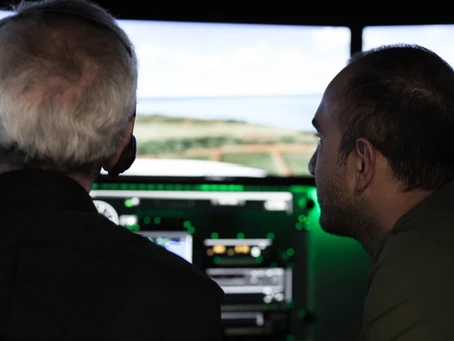Why Learning to Fly Could Pay Off Later
by Tomas Peralta
3 min read ·

Ensuring that you will have a job after a health and economic crisis like the current Covid-19 crisis is on everyone’s minds right now. Knowing that a professional pilot job is waiting for you at the end of this tunnel is what every pilot is hoping for. Learning to fly right now, logging in as many flight hours as you can, and building a solid foundation of manual and simulated flight skills will open more doors to flying jobs and coveted opportunities for pilots.
To become a pilot and qualify for professional pilot jobs, you need a bachelor’s degree in a flying related field such as aircraft operations, aviation, aeronautical engineering, …etc—different schools offer different opportunities. Also, a pilot must obtain a proper license to fly. In order to receive any sort of license, a pilot must complete a minimum number of flight hours. To get a commercial pilot license, a pilot must log-in upwards of 1,750 hours of flying under an FAA-approved Part 141 curriculum.
Learning to fly under an FAA-approved Part 141 curriculum is essential; most commercial flight companies and professional pilot jobs require that pilots be trained under Part 141 curriculum—not Part 61 (mom and pop flight schools). Making sure that your flight school is FAA-approved and offers Part 141 curriculum is an investment that will pay off when applying for your license. If trained under this curriculum, required flight hours are reduced—giving you more time to train in other areas and spending less money on individual flight training.
In-air flight hours and training are paramount to helping pilots pass exams and obtain licensure. Manual flight hours and training are a coveted set of skills now that the FAA has formally stated that pilots increasingly lack manual flight skills. Most pilots begin to lose manual flight skills because commercial airlines mandate the use of automated aircraft systems in almost all of the flight phases. Relying on automated systems has resulted in a lot of pilots losing the ability to manually control a plane, which is incredibly alarming in case of emergencies or loss of aircraft systems. Training to fly manually and to log in as much manual flight hours as possible will give a pilot a much-needed edge to their resume, being better equipped at flying in all scenarios with or without automated systems—a skill that even more seasoned pilots are now lacking.
To begin your flight training before you graduate from school means getting a leg-up on the competition by building on your total flight hours. Or maybe you already graduated and have obtained your pilot license; adding more hours and training to your resume and gaining more in-depth knowledge of your craft is an excellent way to polish up your resume and become a better candidate for future flying jobs.
Professional pilot jobs have a much higher investment return than most professions. Taking into account the average bachelor’s degree cost, training costs, as well as the average pilot’s salary—according to the U.S. Bureau of Labor Statistics—a pilot earns $35 for every dollar they invest in their training. This is a very high return average, considering that job opportunities for pilots are contingent on their flying experience; flight companies use a pilot’s flight hours as a baseline to determine whether or not a pilot would be an asset to their company.
Building flight time during the current state of the economy—now that most airplane travel has been halted—is an excellent time to invest in your future as a pilot and make sure there is a flying job waiting for you when the industry gears up again. Enrolling in flight training or getting a personal instructor will only put you ahead of the curve in terms of acquiring bankable skills for all professional pilot jobs.
Reach Out Today